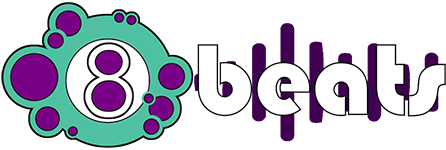
One such deduction that has gained significant attention in recent years is the Qualified Business Income Deduction (QBID). Enacted as part of the Tax Cuts and Jobs Act (TCJA) in 2017, the QBID offers substantial tax savings for eligible taxpayers. In this article, we will explore what the Qualified Business Income Deduction means for you, how it works, who qualifies, and strategies for optimizing its benefits. For instance, a taxpayer with $30,000 of QBI, $100,000 in total taxable income, and $5,000 in capital gains would simply apply 20% to their QBI because it’s the lesser of the two amounts ($30,000 vs. $95,000).
- The Internal Revenue Code (IRC) lacks a precise definition, but guidance can be drawn from case law and IRS interpretations.
- To figure if the item of income, gain, deduction, or loss is included in QBI, you must look to how it’s reported on your federal income tax return.
- The second requirement to take the QBID is that the pass-through business must have qualified business income for the tax period.
- IRS Form 8995 offers a simplified way to help small business owners calculate and claim their QBI deductions.
- Once you’ve completed the steps in each of the relevant schedules for your client’s return, you’re done.
The QBI Tax Deduction: What Is It and Who Can Claim It?
- Therefore, the time period to be able to claim this deduction and save on small business taxes is limited.
- A sole proprietorship is owned and operated by one individual, and there is no legal separation between the owner and the enterprise.
- James and Mary will be able to claim an $8,000 qualified business income deduction.
- JMS had income of $91,000 for 2019, which includes $7,000 of capital gains and $4,000 of dividends.
- Once all pre-2018 losses have been used, losses will be allocated based on the QBI Fixed Percentage in column B for each subsequent year in which losses were suspended.
- This is where you add up wages and profit and multiplying it by 2/7ths.
A qualified trade or business includes any trade or business for which you may deduct ordinary and necessary business expenses. In the case of a partnership or S-corporation, the deduction applies at the partner or shareholder level. If all of this sounds complicated, it is, at least when you get to the higher income levels. But the good news is TurboTax will take care of the calculations Accounting Security and let you know if you qualified and how much of a deduction you’re entitled to. At higher income levels, the deduction is reduced or eliminated, depending on the nature of the business.

Business owners with pass-through income

Undoubtedly, more administrative guidance will be issued to further define and clarify the law’s parameters (e.g., cloudy areas such as “reputation and skill” and definitions of specified service trades or businesses). Until then, CPAs reading this article have a general idea of how the rules’ mechanics will apply to most taxpayers, and CPAs can be of great service in explaining how these rules affect individual taxpayers and offer opportunities for tax planning. The reduction ratio is applied to this hypothetical amount to determine the reduction of the wage and capital limitation. Once you hit these limits, your QBI deduction will start to “phase out,” meaning you only get a partial deduction. But you won’t yet hit a hard limit based on the amount you’re paying out in wages to your employees — which does apply once you reach the second income threshold.
Step 1 – Determine the QBI for every pass-through entity
- December rolls around and this is the perfect time to optimize QBID by running a bonus.
- However, there may be limits to the REIT/PTP component depending on the type of trade or business and your taxable income.
- However, certain types of businesses with income exceeding the threshold amount may not be eligible to take the deduction.
- Generally, a trade or business involves regular and continuous activity conducted with the primary goal of earning income or profit.
- His work has supported many companies on their path to growth, including helping them find investors, manage scaling and overcome hurdles.
- All three entities also share facilities and centralized business elements (HR, accounting, etc.).
- The qualified business income deduction is worth up to 20% of your taxable business income.
Specifically, a pass-through entity can be identified as a qualified trade or business if it has QBI. The Keeper app offers a built-in deduction tracker that scans your purchases and finds qualifying business expenses for you. The lower threshold is what you need to stay below to get the full 20% deduction. Because of this, business owners are faced with a decision between short-term and long-term savings. If you forego your retirement savings in favor of more QBI, you’ll reduce the amount of tax you owe the IRS right now.

What is a pass-through business?
Second, if a business is a qualified business (i.e., it is not a specified service trade or business), the deductible QBI amount for the business is subject to a W-2 wage and capital limitation. If your total taxable income — that is, not just your business income but other income as well — is at or below $182,100 for single filers or $364,200 for joint filers in 2023 you may qualify for the 20% deduction on your taxable business income. In 2024, the limits rise to $191,950 for single filers and $383,900 for joint filers.

Because the taxpayers have only one qualified business, the combined QBI amount is also $48,450 before applying the overall limitation of $66,000 (20% of $330,000). H and W file a joint return on which they report taxable income of $310,000, of which $10,000 is net capital gain and $280,000 is ordinary net income from H’s interest in an S corporation. Combined QBI is $56,000 before applying the overall limitation of $60,000 (20% × $310,000 taxable income — $10,000 net capital gain).
The amounts reported to you as your share of patronage dividends and similar payments on Form 1099-PATR aren’t automatically included in your QBI. Therefore, if a taxpayer has net capital gains, those gains may decrease his or her QBID. For this deduction, net capital gains are long-term gains and qualified dividends minus short-term losses. If the taxpayer is above the lower threshold, the taxpayer’s QBID for each entity begins to be limited. In this case the allowed QBID from each entity is limited by the amount of the entity’s W-2 wages or a combination of W-2 wages and qbid unadjusted basis of assets. The qualified business income (QBI) deduction is one of the best tax planning tools out there yet most business owners have never heard of it.
And if you’re looking for simpler explanations of complicated tax topics, our Keeper tax assistants are here for you! There are also special circumstances with people who own multiple businesses. This may influence which products we review and write what are retained earnings about (and where those products appear on the site), but it in no way affects our recommendations or advice, which are grounded in thousands of hours of research.
